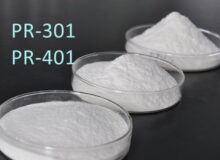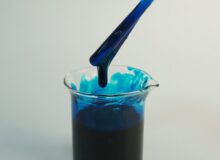Reactive Dyes Printing Thickeners
Reactive Dyes Printing Thickeners
Reactive Printing Thickeners are used to give the printing paste the right viscosity for smooth, precise application and to ensure good control during printing. They also help improve the clarity of the design and prevent spreading or bleeding.
| Reactive Printing thickeners | PR-301 | >70000,(5%) | High performance reactive dye thickener, high viscosity, good color yeild and hand feel |
| PR-401 | >8000,(5%) | High performance reactive dye thickener, high viscosity, stable storage, good color yeild and hand feel |
What are Reactive Dyes?
Reactive dyes are azo or anthraquinone-based dyes that form a covalent bond with the fiber, typically cellulose fibers like cotton, linen, and viscose. This results in highly durable and wash-fast colors.
Key Features of Reactive Dyes Printing:
- Vibrant Colors: They produce bright and vivid shades.
- Excellent Wash Fastness: The dyes are chemically bonded to fibers, making the print resistant to washing and rubbing.
- Good Light Fastness: The colors retain brightness under sunlight.
- Wide Color Range: Available in numerous shades and intensities.
Printing Process:
The reactive dye printing process generally involves:
- Preparation of the Fabric: The fabric, often cotton or other cellulose fibers, is cleaned and scoured to remove impurities.
- Preparation of the Printing Paste: Reactive dyes are mixed with a thickener, salt, and alkali to help the dye react and adhere to the fabric.
- Application: The printing paste is applied to the fabric using techniques such as roller, screen, or rotary printing.
- Curing/Setting: The printed fabric is subjected to heat or steaming to facilitate the chemical reaction between the dye and fiber, which fixes the color permanently.
- Washing: Excess dyes and chemicals are washed out to reveal the final print.

Textile printing. Workers assessing the colours on a textile sheet after printing. The textile pattern has been printed using the rollers of a rotary printer (at upper centre). Each of the rollers print a single colour onto the textile, each forming a part of the completed pattern. Photographed in Germany.
Advantages & Disadvantages:
- Advantages: Bright colors, washable prints, eco-friendly (less toxic compared to some other dyes), suitable for detailed designs.
- Disadvantages: Sensitive to pH and temperature during fixation, requires thorough washing after printing, and can be challenging to handle in large-scale production due to the need for precise control.
Applications:
- Textile printing on cotton and viscose fabrics.
- Creating intricate and colorful designs on garments, home textiles, and accessories.
Related Products

Disperse Dyes Printing Thickeners
Textile Printing Thickener



